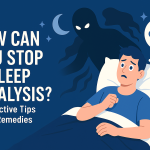The Apple Watch has quickly become one of the most popular smartwatches globally, known for its versatile health and fitness features. Among its many capabilities, sleep tracking stands out as a highly sought-after function. But how accurate is the Apple Watch sleep tracker, and can you truly rely on its readings for optimizing your sleep health? In this comprehensive guide, we’ll delve into the technology behind the Apple Watch’s sleep tracking, compare its performance with medical-grade devices, explore its strengths and limitations, and provide actionable tips for improving your results.
Understanding Apple Watch Sleep Tracking Technology
Before evaluating the accuracy, it’s crucial to understand how the Apple Watch tracks sleep. The Apple Watch uses a combination of motion sensors (accelerometer and gyroscope), heart rate tracking, and advanced algorithms to estimate your sleep patterns.
Key Components of Apple Watch Sleep Tracking
- Motion Sensors: Detect micro-movements to determine when you fall asleep and wake up.
- Heart Rate Monitor: Tracks your heart rate variability, which can indicate different sleep stages.
- Sleep Algorithms: Apple’s algorithms process the raw sensor data to estimate time in bed, time asleep, and sometimes sleep stages.
How Sleep Data is Presented
The Apple Watch, through the Apple Health and Sleep apps, provides users with information like:
- Total time in bed
- Total time asleep
- Sleep consistency and trends
- Occasionally estimated sleep stages (with watchOS 9 and newer)
How Accurate Is Apple Watch Sleep Tracker?
The burning question remains: Is Apple Watch sleep tracking accurate? The answer is nuanced, as accuracy can depend on what metrics you’re monitoring and how you define “accuracy.”
1. Accuracy in Detecting Sleep and Wake Times
Multiple studies and user reports suggest that the Apple Watch is generally highly accurate at detecting when you fall asleep and when you wake up. Its sensors efficiently pick up on your subtle movements and heart rate changes, allowing for reliable identification of sleep onset and end.
Key Takeaways:
- Sleep start and end times are usually within a few minutes of actual events.
- Performance is comparable to other consumer-grade fitness trackers.
- Performance is less precise than clinical-grade polysomnography (the gold standard for sleep studies).
2. Accuracy of Sleep Stages (Light, Deep, REM)
With the release of watchOS 9, Apple introduced sleep stage tracking (Light, Deep, REM). However, this is where the limitations become more apparent. Unlike medical polysomnography, which uses brainwave (EEG), eye movement (EOG), and muscle activity (EMG) sensors, the Apple Watch relies solely on movement and heart rate patterns.
- Estimates of time spent in each sleep stage should be considered approximate.
- Studies have found that Apple Watch and similar wearables tend to overestimate light sleep and underestimate REM and deep sleep.
- Stage-by-stage accuracy is sufficient for general trends but not suitable for diagnosing sleep disorders.
3. Comparison to Medical-Grade Devices
The medical gold standard for sleep measurement is polysomnography (PSG), conducted in a sleep lab with multiple physiological sensors.
- Apple Watch sleep tracking performs well for gross sleep duration and wake time detection compared to PSG.
- For sleep stage classification, PSG is far superior and should be used for any clinical diagnosis.
- Apple Watch and other wearables are best used for tracking long-term sleep patterns and consistency.
Strengths and Limitations of Apple Watch Sleep Tracking
Strengths
- Highly convenient and non-intrusive—no wires or special headgear required.
- Good accuracy for total sleep time and sleep/wake periods.
- Excellent for spotting trends and improving sleep habits over time.
- Integrates seamlessly with Apple Health for holistic wellness tracking.
Limitations
- Sleep stage data is only an estimate—not as accurate as a medical sleep study.
- May not detect brief awakenings (“micro-awakenings”) as well as clinical devices.
- Battery life may require charging before bedtime for overnight tracking.
- Environmental factors (sleep position, movement, heart rate changes due to stress or illness) can affect data accuracy.
Factors That Affect Apple Watch Sleep Tracking Accuracy
Several factors can influence how accurately your Apple Watch tracks your sleep:
- Watch Fit: Wearing the watch too loosely can decrease sensor accuracy.
- Skin Contact: Good contact with your wrist is vital for heart rate measurements.
- Firmware Updates: Newer software (watchOS 9 and later) improves sleep stage tracking.
- User Habits: Frequent movement during sleep, irregular sleep times, or inconsistent charging routines may skew results.
- Health Factors: Certain medications, heart conditions, or restless leg syndrome can affect heart rate and movement, impacting accuracy.
How to Maximize Accuracy of Your Apple Watch Sleep Tracker
To get the best possible sleep tracking data from your Apple Watch, consider these tips:
- Wear Your Watch Snugly: Ensure your watch fits securely but comfortably on your wrist.
- Keep Watch Charged: Charge your Apple Watch before bed if battery is low to avoid interruptions in tracking.
- Update Software: Always use the latest watchOS for improved algorithms and features.
- Set Bedtime Consistency: Use the Sleep Schedule feature for more regular data and insights.
- Avoid Distractions: Enable Do Not Disturb or Sleep Focus to prevent notifications from disrupting your sleep.
Apple Watch Sleep Tracker: User Reviews and Studies
Most users report satisfaction with the Apple Watch sleep tracker for daily use and habit building. Many cite its ease of use, integration with other health data, and actionable insights as major advantages. Scientific studies generally affirm the device’s accuracy for sleep/wake detection but recommend caution for interpreting detailed sleep stages.
If you have a diagnosed sleep disorder or need precise sleep stage data, consult a medical professional and undergo a formal sleep study.
When to Rely on Apple Watch Sleep Data (and When Not To)
Good Use Cases
- Tracking overall sleep duration and trends over weeks or months
- Building better sleep habits
- Correlating sleep patterns with fitness and wellness metrics
Poor Use Cases
- Diagnosing sleep disorders (apnea, insomnia, etc.)
- Relying on exact sleep stage breakdowns for medical decisions
- Expecting 100% precise detection of brief awakenings or micro-sleeps
Conclusion: Is Apple Watch Sleep Tracker Accurate Enough?
The Apple Watch sleep tracker offers a convenient, user-friendly, and generally accurate method to monitor your sleep for overall health and habit-building. While it can’t match the precision of medical-grade sleep studies—especially in tracking sleep stages—it performs admirably in tracking total sleep duration, sleep/wake times, and long-term trends. For most users, Apple Watch sleep data is accurate enough to guide healthier sleep behaviors. For clinical needs, however, always consult a healthcare professional.

